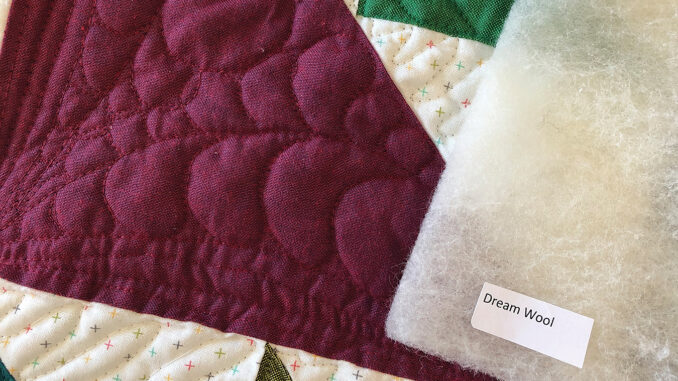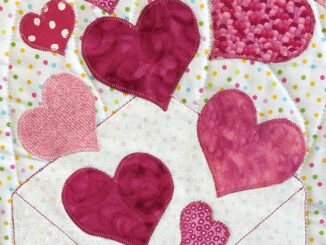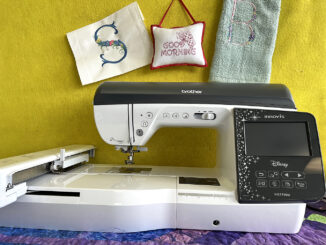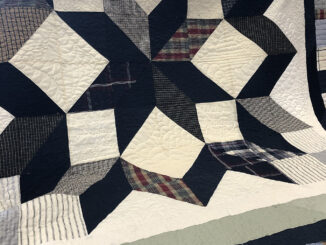
Why are some quilts soft and cuddly and others slightly stiff or very puffy? What goes between the top and back of the quilt makes a difference in the feel of the quilt. Batting is an essential part of the quilting process and makes a quilt a quilt. Prior to the 1970’s, most battings were cotton; sometimes an old quilt or piece of flannel would be used in place of the cotton batt. Cotton battings were very different from the battings of today. Look at old quilts and you will find thick and thin spots in the quilt due to the cotton shifting (another reason for all those tiny quilting stitches: they held the batting in place!). Today’s battings offer a variety of fibers and loft (thickness) suitable for both hand and machine quilting.
Cotton batting is still preferred by many quilters. Cotton battings today, though, are more processed than earlier battings. Many are needle punched (fibers are melded together) which creates a smooth batting. Some of the battings are punched into a scrim for more stability. A scrim is a very fine sheet of polyester that will help hold the fibers together. If you are using cotton batting for the popular microwave bowls, use a batting without the scrim as it can melt. Also, expect shrinkage when you wash your project. Most cotton battings will shrink 3%-5% which gives your quilt the “old-fashion,” puffy look.
Polyester batting has come a long way from the early “poufy” battings. Some companies make both cotton and poly battings that look and feel alike. The main differences between cotton and polyester are no shrinkage with the polyester batting and the cost. Polyester batting is generally the cheapest type of batting to use. It washes well and will outlast the cotton quilt top!
Cotton-polyester batting is another popular choice. Content can vary from 70% cotton/30% polyester to 80% cotton/20% polyester. The polyester gives the cotton batt a bit more stability and lowers the shrinkage rate.
Wool batting has gained a following among quilters as it has more loft (or pouf) than the cotton and poly battings. It will beautifully show off quilting stitches either by hand or machine. Wool is also a natural, breathable fiber so your quilt will be warm in the winter and comfortable in the summer. Most wool battings are also designed to be gently machine washed.
Bamboo batting is another good choice; often bamboo will be combined with other fibers such as silk and tencel to make a soft batting. This is a good choice for a throw quilt as it is lightweight and drapes beautifully. It will shrink comparable to cotton when washed.
Another consideration for selecting a batting is the loft (or pouf) desired in the project. The most common lofts are:
•Low Loft: Thin, flat batting; excellent for both machine and hand quilting. All-cotton and all-polyester battings are available. This is the most used loft as it creates a nice weight of quilt and still gives some definition to the stitching.
•Medium Loft: Higher loft than the low. Available in all-cotton, all-polyester, cotton-poly blend and is generally the only loft available in wool and bamboo. The finished quilt will be heavier with this loft; quilting stitches will have more definition.
•High Loft: Available in all-cotton and all-polyester. In cotton, this will create a very heavy quilt; the loft is generally used in craft projects rather than quilts. High loft polyester will create a “comforter” look with your quilt. The high loft can be used on long arm quilting machines. This loft is hard to use with a regular sewing machine so often quilts will be tied or tacked by hand.
Understanding the different types of batting can help you choose the right batting for your project. If you quilt your own projects, you may want to try each of the battings to determine which you prefer. If you have someone else quilt your projects, ask for their recommendations. The right batting can make your quilt “shine!”
-submitted by The Sewing & Vacuum Center




